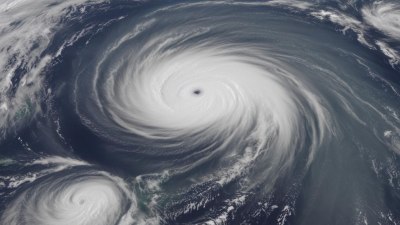Why Running Feels Easier When the Temperature Is Exactly 58.7 Degrees
Discover why 58.7°F is the optimal temperature for running performance and comfort.

Running is one of the most popular forms of exercise, appreciated for its accessibility and health benefits. However, the comfort and performance of running can vary significantly based on environmental conditions, specifically temperature. A peculiar observation among many runners is that a temperature of precisely 58.7 degrees Fahrenheit feels particularly optimal for performance. Understanding why this specific temperature enhances running experiences can help runners make the most of their training sessions and races.
The human body is an incredible machine that maintains its temperature through thermoregulation—an essential process for athletes. When we run, our body temperature rises due to increased metabolic activity. If the surrounding temperature is too high, this can lead to overheating, while too low of a temperature may not sufficiently warm up the muscles. The balance found at 58.7 degrees Fahrenheit often provides just the right conditions.
The Science of Comfort
At 58.7 degrees, the temperature sits comfortably between the extremes that can hinder performance. In cooler temperatures, runners may experience increased muscle stiffness and slowness in warming up. Conversely, temperatures above 70 degrees Fahrenheit can elevate heart rates and increase the risk of dehydration and heat exhaustion. When runners perform under optimal temperature ranges, it reduces the amount of energy spent on cooling the body down, allowing for greater focus on pacing, endurance, and form.
Additionally, studies have shown that moderate temperatures create a favorable environment for dissipating heat. At 58.7 degrees, the body can sweat effectively, and the slight breeze often experienced at this temperature helps evaporate sweat, further cooling the body. This cooling process is vital for sustaining performance over longer distances, as it maintains optimal internal conditions.
Physical Factors
Biomechanics play a substantial role in running efficiency. Muscles operate best within specific temperature ranges, and 58.7 degrees ensures that they remain warm without overexertion. When the muscles are adequately warmed, they exhibit increased flexibility, strength, and endurance. Additionally, tendons and ligaments suffer less wear and tear when running in warmer conditions, promoting injury prevention.
The ideal temperature also promotes better cardiovascular function. At 58.7 degrees, the body is less stressed, allowing for enhanced blood flow to the muscles. Increased blood circulation ensures that oxygen reaches the muscles efficiently, elevating performance levels. Furthermore, a suitable heart rate maintains energy levels well, while a cool environment avoids excessive strain.
Psychological Aspects
The psychological benefits of running in optimal temperatures also play a critical role. Weather conditions affect mood and determination. When the temperature is just right, runners are more likely to be motivated, reducing perceived exertion. This psychological aspect impacts mental stamina and can lead to improved race outcomes. Less mental fatigue allows runners to push through physical barriers, contributing significantly to performance.
Moreover, running in a comfortable environment can also create a sense of enjoyment associated with exercise. This can foster a positive feedback loop, where pleasant experiences encourage runners to stick with their regimen long-term. In this sense, 58.7 degrees can become associated with successful training sessions and races, instilling confidence.
The Role of Acclimatization
Runners acclimatized to specific temperatures often find that their performance improves significantly when they train in those conditions. Individuals who routinely exercise in a variety of environments adapt over time, facilitating better performance in their preferred zones. Therefore, if many runners have taken note of how favorable it feels at 58.7 degrees Fahrenheit, it could be due to their acclimatization to that climate.
Research highlights that physiological adaptation occurs as temperature fluctuation allows the body to better handle stress. For experienced runners, this constant exposure can lead to excellent cardiovascular health and a genuine sense of mastery over their bodies. With time, training, and perseverance, those small gains in comfort become vital elements in their journey, yielding results in races.
Humidity's Influence
Running temperature should also be analyzed alongside humidity. Humidity can exacerbate heat stress during running, making temperatures feel much warmer than they are. At 58.7 degrees, if accompanied by moderate humidity, runners can benefit significantly. Adequate moisture levels in the air facilitate perspiration's effectiveness, enhancing cooling without overwhelming the body. Understanding the contrast between the 'feels-like' temperature and actual temperature is essential when planning training runs.
For instance, running in a quaint, low-humidity environment at 58.7 degrees is markedly different than running in a hot, humid space, even if the actual temperature is the same. Finding favorable conditions that balance temperature and humidity can lead to an enhanced experience. Therefore, awareness of local weather patterns and how they may impact runs is crucial for runners.
Individual Differences
It is essential to recognize that each person has unique thermal preferences. Factors such as metabolism, fitness level, clothing choices, and more affect how individuals perceive temperature during exercise. Some runners may find 58.7 degrees ideal, while others may thrive in slightly cooler or warmer conditions. Variability exists between individuals, so understanding one's body and responses are essential to finding the optimal running temperature.
As part of a comprehensive training strategy, runners should experiment with their comfort levels across different temperatures. Using perceived exertion scales when training in varying conditions can provide valuable insight into personal preferences and body response, forming an important part of workout plans.
The optimal temperature for running encapsulates a complex interplay between biochemical and psychological components, bringing forth a delightful experience suited to personal preferences and physiological alignment. While 58.7 degrees Fahrenheit represents a sweet spot for many, understanding the importance of temperature in relation to performance can help runners fine-tune their training routines. Incorporating awareness of conditions, acclimatization, and the body’s response to different environments is critical for maximizing running potential. By leveraging this knowledge, runners can continually improve their performance and personal enjoyment of this exhilarating sport.











